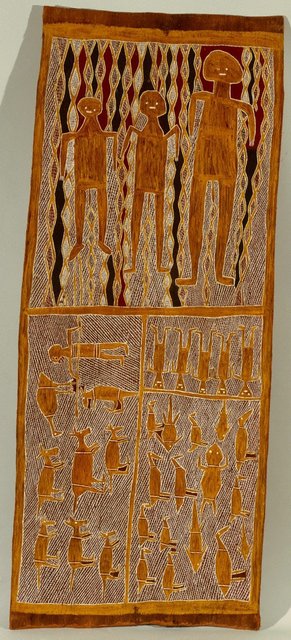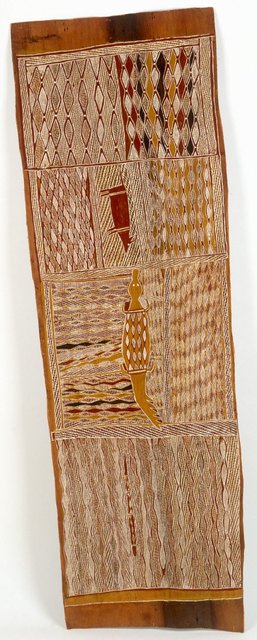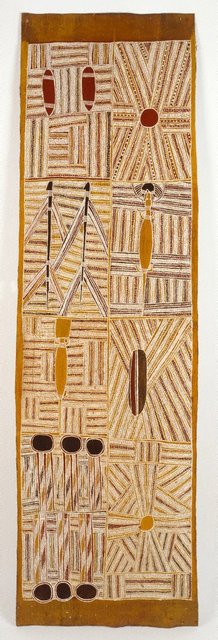Art Sets.
20th-century Australian art: Bark paintings
Print this setBy the Art Gallery of NSW
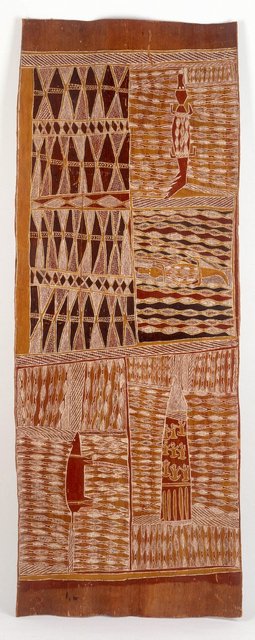
AGNSW collection Muŋgurrawuy Yunupiŋu Lany'tjung story (Crocodile and Bandicoot) 1959
Biranybirany on Caledon Bay is the ancestral country for the three branches of the Gumatj clan, and is home to the major Gumatj totems: Baru (saltwater crocodile) and Gurtha (fire). It is also the homeland of the Yunupingu family. In 1959 – when Munggurawuy Yunupingu painted the Gumatj ancestral fire story on four large barks – he was ceremonial leader, custodian of knowledge and keeper of the law for the Gumatj clan of the Yirritja moiety in north-east Arnhem Land.
Lany'tjung story (Crocodile and Bandicoot) depicts the story of the ancestral fire that burnt across a huge swathe of eastern Arnhem Land, from Biranybirany to Melville Bay. During a ceremony near Caledon Bay, the fire on the ceremonial ground flared up, out of control, and raged northwards. Above this scene, Munggurawuy includes two images of Baru, making the association with the historical fire that caused the distinct markings on crocodiles' backs.
The patterns of diamond-shaped miny'tji (sacred clan designs) at the top left of the painting allude to Munggurrawuy's preoccupation with a missing canoe at the time he made this painting. By including this event with the ancestral story, he shows the relationship between the ancestral past and the present.
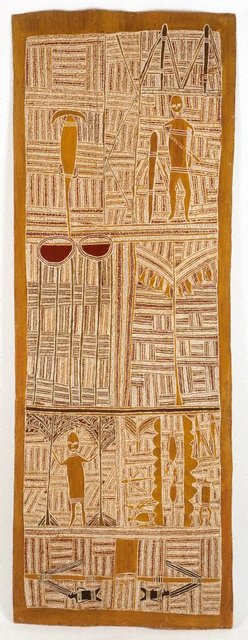
AGNSW collection Mawalan Marika Djan'kawu creation story 1959
Marika was one of the first artists at Yirrkala to begin painting barks for sale, and he was also one of the first leaders and artists from Arnhem Land to visit the southern Australian cities.
A leader of the Rirratjingu people, Marika painted the important of Dhuwa ancestors, the Djang’kawu, the locations they visited and their actions as they travelled across country, shaping the landscape.
Djang'kawu creation story portrays the Djang'kawu Sisters travelling to different locations and giving birth to the Dhuwa clans. The lower panel refers to the Sisters giving birth at Arnhem Bay and later at Milingimbi, above. Marika also includes eight mawalan (sacred digging sticks) that the Djan'kawu plunged into the ground, creating water-holes, sacred trees and food-bearing plants. To the right of this, the Djang'kawu watch a sunrise and sunset. The top panel shows the death of the Sisters at Galiwin'ku (Elcho Island), while Djan'kawu the man is shown at Yalangbara contemplating the mawalan and singing.
